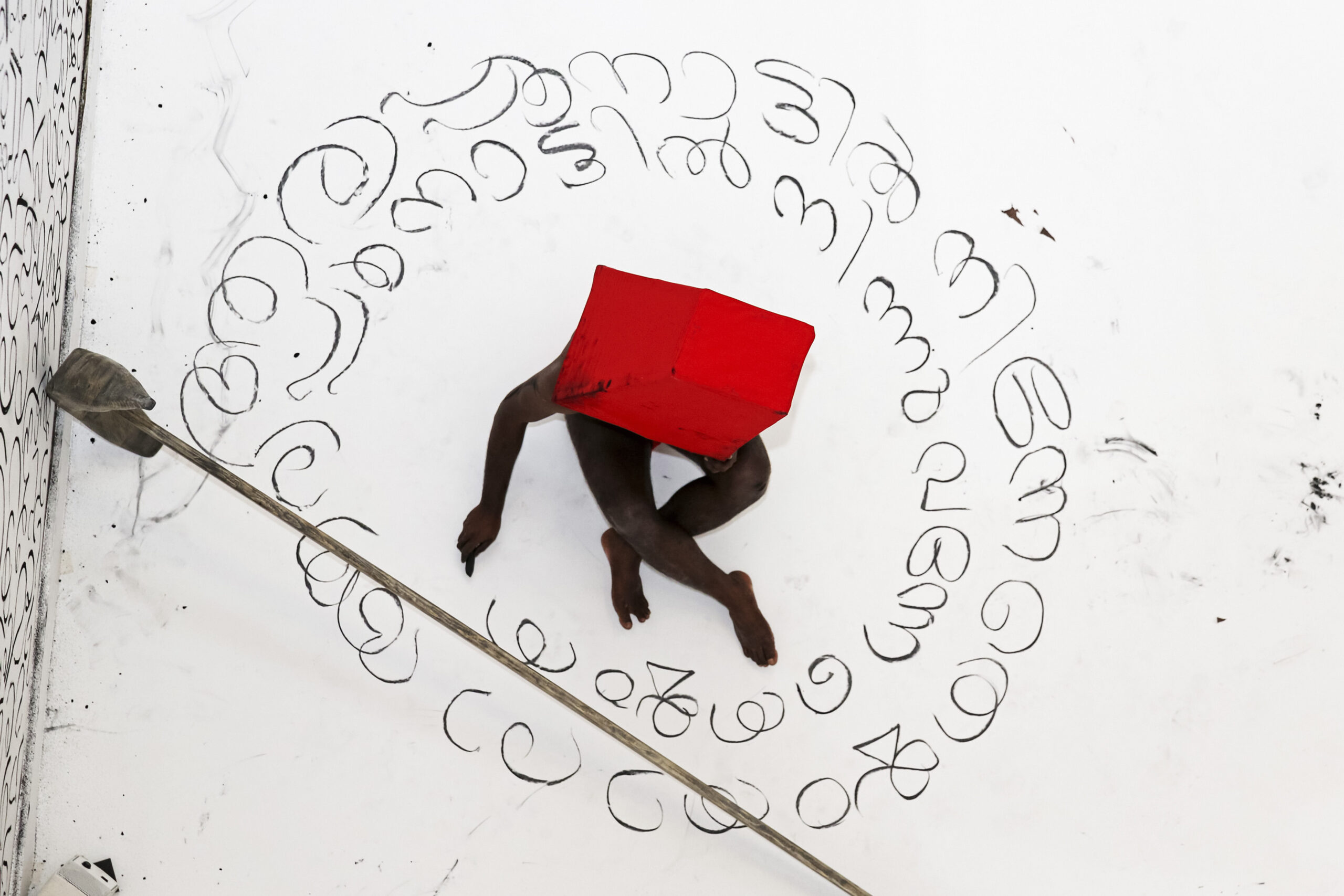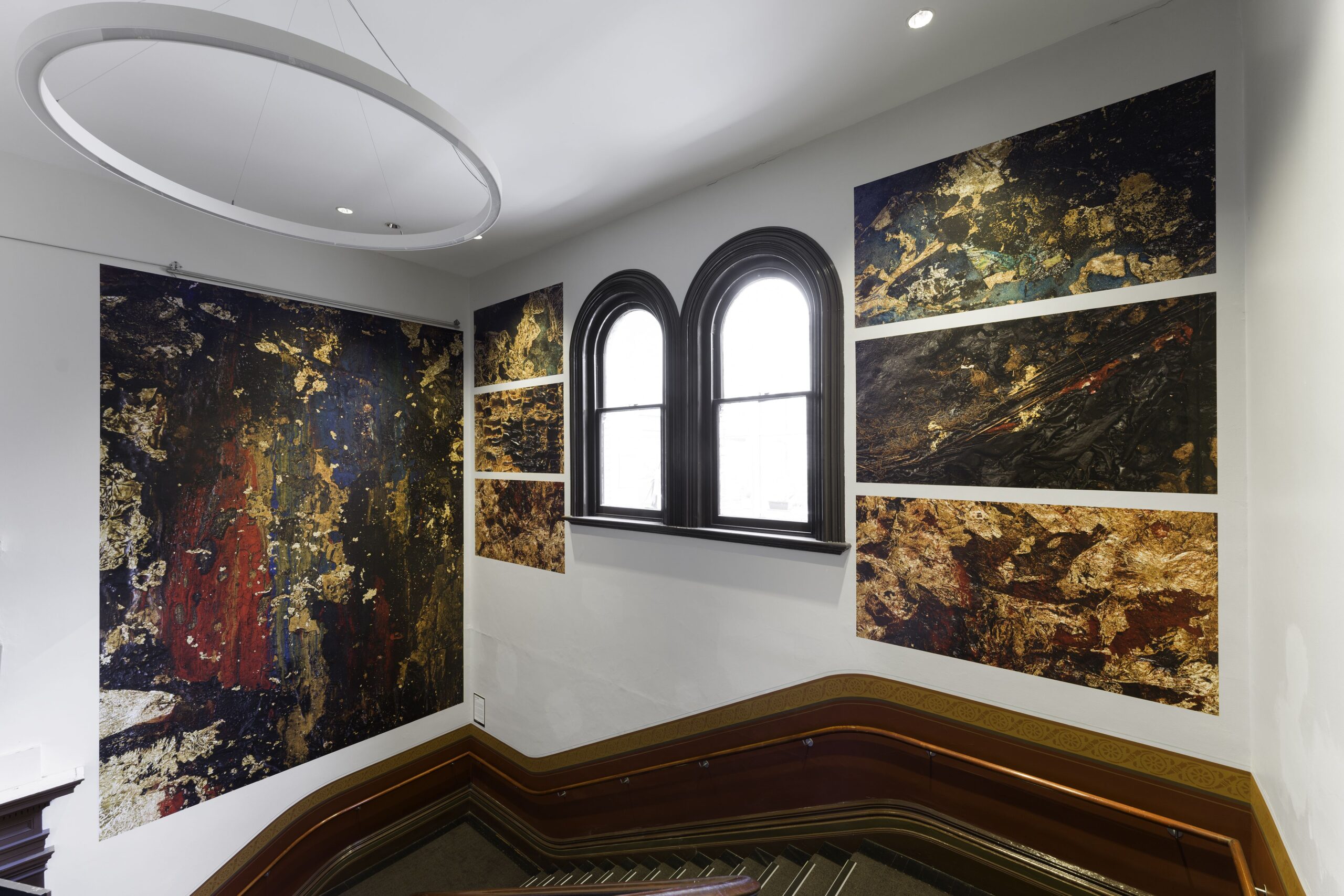Equity—Builder
Introduction
Arts House is proud to launch the Equity—Builder (E—B). This living plan is our commitment and roadmap to antiracism and justice in the arts.
The E—B is also a knowledge-sharing platform that is dedicated to building a culturally safer ecology for artists and arts workers who endure barriers to access.
In step with our commitment to access through our Disability Inclusion Action Plan (DIAP), the E—B responds to calls for structural change and the City of Melbourne’s vision for an Inclusive Melbourne.
Arts House acknowledges our crucial role in amplifying voices, ideas, stories and practices across our programs and spaces in North Melbourne, Naarm and beyond our shores. The E—B is a plan born from our communities of artists, arts workers and audiences who have, over many years, called for action towards greater equity in the arts. This plan is an action to that call.
For our contemporary arts and culture to truly reflect the multitude of communities in contemporary Australia, our sector has to change how we make work, who we support, and who makes decisions. Through our programs and operations Arts House will work towards equity by reducing barriers to access, embedding just and antiracist practices, and ensuring lived experience is centred in our work.
The name ‘Equity—Builder’ refers to the act of building equity over time through a series of actions. It reflects our long-term commitment to this work at Arts House and the acknowledgement that equity through positive change does not come from a single project or moment. It requires time, effort and investment. In using the term ‘equity’ we recognise that the needs of our Focus Communities are unique and we are committed to providing them with what they need to thrive.
The E—B has the following aims:
- Practise a culture of accountability, solidarity and lifelong learning at Arts House
- Guide Arts House to ensure justice-oriented and pro-equity practices are reflected across all internal and external areas of work: strategies, operations, people, policies, programs and communications
- Deliver on actions that prioritise Focus Communities to reduce barriers to access
- Share knowledge, tools and templates to celebrate good practice and build a culture of positive change in our sector
Online, the E—B comprises:
- Manifesto | an action to a call: A creative writing response to the call for equity in the arts
- Pledges: Arts House’s institutional, trackable and public-facing commitments and investments towards racial justice
- Pro-Equity Glossary: A glossary of keywords and terms that inform and enrich the E—B
- Collective Bookmark: An open-access platform that houses toolkits, templates, readings and case studies from around the globe that spotlight equity
You can engage with the E—B platform in a multidirectional way, moving between pages and sections depending on where your interests and curiosities take you.
Offline, the E—B is delivered through Arts House’s operations and programs, including:
- Equity—Building Curatorial Initiative: A guest curatorial commissioning program where an artist-curator from a Focus Community is handed spaces and resources of Arts House for a curatorial project across two years
- Counterflows: A program of knowledge exchange and sharing of ideas, practices and work nationally and internationally for transgenerational artists from Focus Communities
- Slow Urgency: An interdisciplinary lab that strengthens reciprocal relationships with communities and the lands on which we live by working reparatively on issues of land, climate, and settler-colonialism
The E—B has been co-designed with critical friends, advisory groups and independent practitioners.
It outlines the concrete actions and steps that Arts House is taking toward a culturally safer workplace and artistic landscape. To ensure we are accountable, we will provide an annual update on how we are delivering on our short term (1-3 years), medium term (3-5 years), long term (5-10 years) commitments to our Focus Communities, our stakeholders and ourselves.
Principles
The Equity—Builder is anchored by five principles that guide us towards equitable thinking, learning and doing. These are:
- Tell the truth about ourselves, our sector, our histories and our futures
- Embody and honour lived experience at all levels of the process
- Commit to lifelong learning, listening and bringing people together
- Practice hope as a social and political act
- Move from ethically defensible to ethically responsible
Focus Communities
Arts House will prioritise the following communities who have historically experienced and continue to endure barriers to artistic, cultural and civic participation.
We are aware of the overlaps and distinctions between these groups, and the limitations of terminology. But to serve our Focus Communities with intention and nuance, we believe going beyond broad terms like CALD, BIPOC and the global majority is imperative, and we want to make our priorities for cultural empowerment clear.
We will amplify the voices of the following Focus Communities at Arts House and centre them in our internal and external work:
First Nations people
Arts House is based on the unceded lands of the Wurundjeri Woi Wurrung peoples of the Kulin Nations, and our primary responsibility remains to the Traditional Custodians of the lands on which Arts House stands. We are committed to responding to the Uluru Statement from the Heart and its call for voice, treaty and truth. We will cede space and power for First Nations peoples from across this continent and have a ‘First Nations First’ approach across all areas of our work.
Elders
For First Nations people, Elders are like libraries for their community. Elders are the knowledge holders, and they share their knowledge so that others can understand the past, allowing culture and traditions to continue into the future. They do this through oral histories, rites of passage, and sharing of cultural authority and knowledge.
Black people
Peoples descended from African, Melanesian or First Nations communities, who are racialised as, and identify as, Black. Black peoples’ struggles against oppression, historically and currently, show that we cannot flatten the experiences of Blackness with other People of Colour, for it sidesteps the truth. Certain effects of racism disproportionately affect Black people, and Anti-Black discrimination is perpetuated by other communities of colour. Through migration, mobility and displacement, Black peoples with ancestral connections to Africa and Melanesia form important and growing communities in our city.
People of Colour
Any person who does not self-identify as White and has ancestral connections to African, Asian, Latinx, Arab and Pasifika communities. Some Black and Indigenous people also self-identify as People of Colour. Although this term can sometimes be contested as all-encompassing, we believe it is important to acknowledge the experience of racial marginalisation in Australia.
People from the global diaspora
Migrants or displaced peoples, and their descendants, with ancestral roots to elsewhere due to the ongoing impacts of colonisation and global flows of labour and capital.
Caste-marginalised people
Caste is an extreme form of social stratification prevalent in the subcontinent. Caste is inherited at birth and cannot be transcended in a lifetime. Caste is connected to ideas of labour, class, and spiritual purity, and directly impacts access to land, education, and basic civic and human rights. The caste system is not based on race and caste is an invisible indicator that travels everywhere the diaspora go. Caste-marginalised groups include Dalit, Bahujan and Adivasi peoples.
People practicing culturally-endangered languages and traditions
Much of the cultural, spiritual, and intellectual life of a people is experienced through language. This ranges from prayers, myths, ceremonies, poetry, oratory, and technical vocabulary, to everyday greetings, taking leave, conversational styles, humour, ways of speaking to children, and unique terms for habits, behaviour, and emotions. Languages are becoming extinct today at an alarming rate.
People from religious minorities under threat
The failure to prevent and prosecute religious violence and discrimination has led to people from religious minorities facing heightened levels of risk, oppression and erasure – personal, cultural, communal and otherwise. In Australia and internationally, this sometimes leads to violations of religious freedoms. The ‘mainstream’ arts in Australia centre secularism. This can render invisible the ideas and practices of shared custom, ceremony, ritual, and culture of religious minorities under threat.
Economically-disadvantaged people and people experiencing hardship
Racially marginalised people are more likely to experience economic disadvantage. Class struggles can often cut across many other identity marks.
Communities within intersections of disability, sexuality, and multiple marginalities
‘Intersectionality’ refers to the ways in which different aspects of a person’s identity can expose them to overlapping forms of discrimination and marginalisation. Disabled peoples, peoples from LGBTQI+ communities and peoples with other multiple marginalities have latitudinal perspectives that enrich each other and us all.
The Builders
Arts House stands on the shoulders of giants in the work of change. We remain eternally indebted to the sovereign knowledges of First Nations peoples through truth-telling, oral histories and cultural practices.
In the deep thinking and building of this work, we have collaborated with a dedicated group of people with lived experience from our Focus Communities. We believe it is crucial to amplify their collective vision and make visible their labour, and emphasise that change is never about a single idea or person. Shared understanding, lineages, references and even contradictions strengthen the ripple effects of how ideas are turned into actions, and how actions lead to lasting change.
Working Group
Co-Artistic Director, Arts House / Equity—Builder Project Lead and Writer
Independent / Equity—Builder Project Lead and Writer
Independent / Equity—Builder Design Lead
Creative Producer, Arts House / Equity—Builder Project Collaborator and Writer
Independent / Equity—Builder Project Collaborator and Writer
Artistic Associate, Arts House / Equity—Builder Project Collaborator and Writer
Creative Program Lead, Arts House / Equity—Builder Project Advisor
Ideation Group
Independent / Equity—Builder Group Facilitator
Head of Indigenous Engagement and Strategy, National Gallery of Australia
Director, Engagement and Partnerships, University of Melbourne
Independent / Writer, Editor, Artist
Independent / Anti-Disciplinary Artist and Educator
Translators
Translator – Hindi
Translator – Mandarin
Translator
Sensitivity Readers
Easy English
Impact Words Consulting
Guest Curators
Slow Urgency, 2022-23
Equity—Building Curatorial Initiative, 2022-24
Micro-commissions
Justice, Equity, Diversity and Inclusion Consultants
Residency Partner
Garambi Baan/Laughing Waters Cultural Precinct operated by InPlace in partnership with Wurundjeri Woi-wurrung Cultural Heritage Aboriginal Corporation.
With special thanks to all Arts House staff, creative advisory group and program partners on E—B initiatives for joining the chorus of change.
An ongoing E—B working group will be formalised to oversee the delivery of the actions within this plan and will feature Arts House staff from all departments and levels alongside independent practitioners.
Equity–Builder Programs

ಒಡಲಾಳ Odalala

ಒಡಲಾಳ Odalala – Public Program
Equity—Builder Accessibility
Easy English version of the Equity—Builder.


